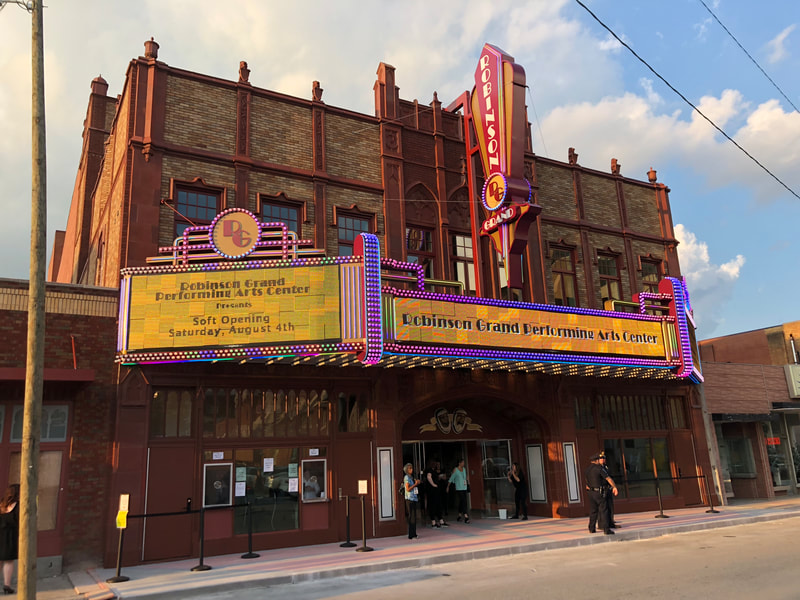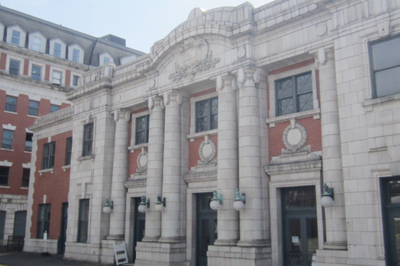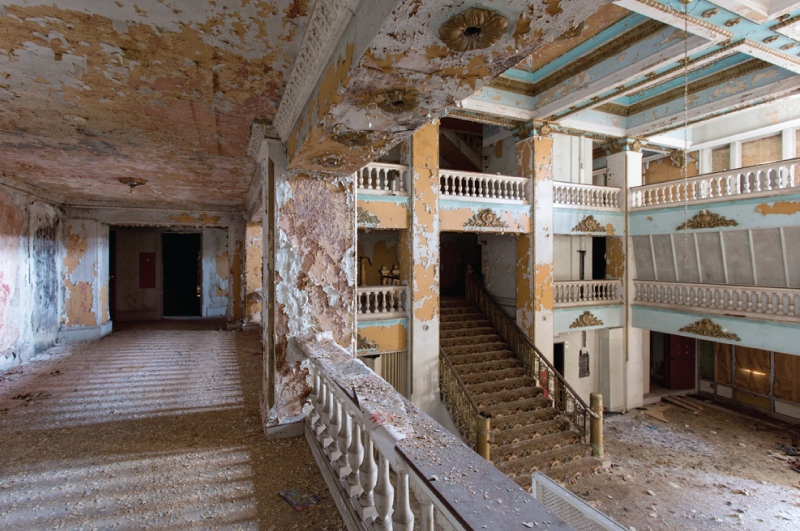|
Last week, the West Virginia Legislature passed legislation that improves the 25% State Historic Tax Credit (HTC) in West Virginia, and it is now on its way to the Governor's desk.
House Bill 4568 (known as Phased Rehabilitations of Certified Historic Structures) achieves multiple goals such as:
If signed into law by Governor Justice, this legislation will become effective on July 1, 2022. What this means for West Virginia is that completing HTC projects just got a little simpler. The three-part application for the state and federal HTCs (which when combined total 45%) will be a more fluid process when working with the West Virginia State Historic Preservation Office and the National Park Service because the agencies will now follow the same procedural rules, thus minimizing paperwork requirements. Equally as important, removing the limitations on allocations and guarantees of historic tax credits will make it more secure and improve investor confidence when undertaking both larger and smaller projects. This is a major win for West Virginia! These provisions increase the Mountain State’s attractiveness from industry-based development firms that specialize in HTC-backed projects, in addition to making the program more user-friendly for individuals wanting to undertake smaller projects. Neighboring states have more restrictive programs, making West Virginia a very investor-friendly state for HTC projects in the mid-Atlantic region. For instance, Maryland has a 20% state HTC that is capped at $3 million per project with a $9 million annual cumulative cap per fiscal year. Pennsylvania and Ohio both have a 25% state HTC, but they have $5 million annual cumulative cap per fiscal year. HB 4568 was sponsored by Delegates Jason Barrett (R-61), Eric Householder (R-64), Erikka Storch (R-03), Vernon Criss (R-10), Paul Espinosa (R-66), Daniel Linville (R-16), Joe Ellington (R-27), Ruth Rowan (R-57), Clay Riley (R-48), Dianna Graves (R-38), and John Hardy (R-63). The Alliance appreciates their support and would also like to thank the leadership and policy expertise provided by the Abandoned Properties Coalition and their long-term dedication to seeing West Virginia’s state historic tax credit improved. The Preservation Alliance of West Virginia is the statewide, grassroots nonprofit dedicated to historic preservation. The Alliance has been working as a member of the Abandoned Properties Coalition since 2016 to improve the state HTC to include the provisions outlined in HB 4568. For inquiries regarding usage of the West Virginia commercial HTC, contact the West Virginia State Historic Preservation Office’s Tax Credit Coordinator, Meredith Dreistadt at [email protected].
2 Comments
 Pictured here is the Flatiron Building located on Main Street in downtown Wheeling. It had been vacant for years before being totally transformed into loft housing with a first-floor coffee shop. This $2.5 million dollar project qualified for $632,653 in state historic rehabilitation tax credits and created 19 constructions jobs. In 2017, the West Virginia Legislature voted to increase the state historic rehabilitation tax credit from 10% to 25%. However parts of the legislation will affect future reinvestment opportunities and even discontinue the tax credit increase. A network of nonprofit organizations, municipalities, and private investors have joined together to ask the Legislature to address these issues and are asking for support in favor of SB344, which was introduced by Senator Weld (R-1) with Senators Plymale (D-5) and Woelfel (D-5) as co-sponsors. SB344 is a bi-partisan bill that will:
the state historic rehabilitation tax credit works for west virginia!From 2018 to 2021, the historic rehabilitation tax credit has attracted renewed interest in our historic commercial districts and spurred private reinvestment in over 80 vacant and dilapidated buildings (some of which are pictured above). When a vacant or underutilized building is repurposed, it generates additional revenues to local government through increased property taxes. Once the state's initial investment is recouped, the project continues to yield positive economic impacts through a combination of sales, income, and business taxes. In 2018 & 2019, over $34 million dollars were invested to finish 9 projects in Charleston, Clarksburg, Fairmont, Franklin, Huntington, Spencer, and Wheeling. These projects created 256 construction jobs for West Virginia. Rehabilitation projects support higher labor costs for construction jobs rather than new materials and also utilize in-state trades and professional services such as legal, accounting, architectural, and engineering, as well as wholesale trade and retail trade. Large and small-scale developers report that historic rehabilitation tax credit programs fill a critical financing gap. The 25% rate provides an incentive to make a difference in a developer's decision to undertake a rehabilitation project, and it makes projects more feasible for individuals. How Does the tax credit work?When rehabbing a certified historic building for a commercial purpose, owners apply for tax credits through the WV State Historic Preservation Office. A building is considered a certified historic structure when it is either individually listed on the National Register of Historic Places or contributing within a historic district. The state historic rehabilitation tax credit is a dollar-for-dollar reduction in income tax liability and can only be applied to the owner's annual income after a rehabilitation project is complete. State and local governments benefit from an increase in employment and other tax revenue even before the tax credit is claimed. Learn more about what you can do to help.
The West Virginia House of Delegates and State Senate, during this week’s special session of the Legislature, passed House Bill 203 to increase the State Historic Tax Credit from 10 percent to 25 percent.
Gov. Jim Justice placed the bill on the Special Session agenda after consultation with legislative leadership and interested parties. The Preservation Alliance of West Virginia, Abandoned Properties Coalition, US Green Building Council, W.Va. Chapter, W.Va. Community Development Hub, Wheeling Heritage, private developers, citizens, and municipalities joined together to create the Revitalize West Virginia Downtown Coalition. That coalition developed a plan to increase the state historic tax credit to aid in economic development of the state and educate legislators on the importance of the historic rehabilitation tax credit. Danielle LaPresta, executive director of the Preservation Alliance of West Virginia, said, “I am pleased that the Governor and legislature saw the potential of the historic tax credit to serve as a catalyst to revitalize West Virginia. This program will spark economic development throughout the state regardless of the size of the community.” The governor is a strong ally of historic preservation in West Virginia, LaPresta said. The 25 percent credit brings West Virginia to parity with neighboring states. Ohio, Pennsylvania and Virginia have a 25 percent state historic tax credit; Maryland and Kentucky have a 20 percent tax credit. This increase will encourage the rehabilitation of historic buildings and spur private investment, create jobs, and help rid the state of vacant and underutilized buildings. Studies have shown that the estimated return on the state’s investment is approximately 2:1. This means for every dollar of tax credit provided by the state, two dollars of additional state taxes and revenue will be created through investments. Renee Kuhlman, director of Policy Outreach, Government Relations and Policy from the National Trust for Historic Preservation said, “With these improvements, state legislators are putting West Virginia’s heritage to work and encouraging investors to bring their dollars to the Mountaineer State. States that have improved their historic tax credits have doubled the use of the federal historic tax credit and have seen construction jobs increase because renovation is labor intensive.” The Legislature passed the legislation with overwhelming support in both houses. Mike Gioulis, PAWV Advocacy chairperson, speaking for the coalition, said: “The coalition would like to thank all of the legislators that voted in favor of the bill, including the sponsors, Speaker Tim Armstead, R, Kanawha, and Tim Miley, D, Harrison. We appreciate that Senate Majority Leader Ryan Ferns, R, Ohio, and Senator Glenn Jeffries, D, Putnam, spoke in favor of the bill. We also would like to thank Chairman Eric Nelson, Jr., R, Kanawha, for his leadership on this issue.” The group also values the support and leadership of Justice as well as his staff. The West Virginia State Historic Preservation Office is developing standards and procedures to educate and promote the program to the public. For more information relating to the historic tax credit program, contact Jennifer Brennan, State Historic Tax Credit Coordinator at 304-558-0240. For additional information regarding this effort, contact the Preservation Alliance of WV Advocacy Chairman Mike Gioulis at 304-545-4881, or visit www.pawv.org and www.revitalizewvdowntowns.com. In early 2016, the Abandoned Property Coalition, a network of community leaders, and local, regional, and national organizations developing community-based solutions to vacant, abandoned, and dilapidated properties across West Virginia, held a strategy session to determine what the Coalition should focus its energy on over the course of the next year. Four people, including representatives from the Preservation Alliance of West Virginia, signed on to research the possibility of pushing forward policy around increasing the rate of West Virginia’s historic rehabilitation tax credit from 10% to 25%.
One major issue the group quickly came to realize was that although West Virginia has 92 commercial and mixed-use historic districts ripe for revitalization –developers choose to invest in neighboring states instead of our downtowns due to West Virginia’s uncompetitive 10% historic rehabilitation tax credit. Neighboring states, including Pennsylvania, Ohio and Virginia, all have 25% historic rehabilitation tax credits. The Herald-Dispatch: Revenue Bill that Includes Historic Tax Credit in High-Stakes Negotiation6/8/2017 By Lacie Pierson / The Herald-Dispatch
CHARLESTON – Members of the West Virginia Legislature picked up Wednesday where they left off on May 24 and sent a tax revenue measure to a conference committee with the goal of reaching a compromise before June 30. House Bill 107, or the West Virginia Tax Reform Act of 2017, was referred to the committee in the first formal legislative action taken by lawmakers in regard to the revenue measure they estimate will close a budget gap for fiscal year 2018, which begins July 1. Read the full story at www.herald-dispatch.com. By Nicole Marrocco / WV Community Development Hub
Little excites me more than a community finding a modern use for a historic building. Nerdy, I know. But just check out this church turned indoor rock gym, gas station turned restaurant, and bank turned grocery store, and I guarantee you’ll be geeking out over the untapped potential of abandoned and underperforming historic buildings alongside me. Historic tax credits make it possible to revitalize historic properties that have a financing gap between what banks will lend and the total cost of rehabilitation. Developers restoring income-producing (i.e. commercial, industrial, agricultural, or rental-residential) buildings listed on the National Register of Historic Places or certified by the National Parks Service can apply for personal or corporate net income tax credits from West Virginia worth 10 percent of rehabilitation expenses. Unfortunately, West Virginia’s 10 percent rate just isn’t cutting it — especially considering all of our neighboring states have either a 20 or 25 percent historic tax credit rate. Developers are wary of rehabbing buildings here because the risk is so much higher compared to places just across the state border. Over the last few months, the Revitalize West Virginia’s Downtowns Coalition (including Generation West Virginia) has been advocating to increase the rate to 25 percent to make our state’s historic districts more attractive to developers and spur private investment. Read the full UpThink to find out why — as a young person living in West Virginia — I believe an increased historic tax credit rate is a game-changer. By Joselyn King / The Intelligencer
WHEELING — The West Virginia House of Delegates passed its version of a revenue bill Friday on what was the sixth day of a special legislative session in Charleston called for setting the state’s 2018 budget. Despite a long agenda of proposed amendments, House Bill 107 was approved with few changes from the measure passed Thursday by the House Finance Committee. It would maintain West Virginia’s consumer sales tax at 6 percent, but would eliminate sales tax exemptions on cellphone services. It also would make no changes to the state’s coal and gas severance tax rates, but would gradually eliminate all taxation of Social Security within the next three years. Read the full story, including more about the historic tax credit, at theintelligencer.net. By Ashton Marra / WV Public Broadcasting
Members of the House are standing their ground when it comes to tax reform. At least, that’s what House Speaker Tim Armstead said Friday after a vote in the chamber on its own version of a revenue bill. The bill does not include any of the changes to the personal income tax Senate Republicans and Gov. Jim Justice have agreed to, but Armstead said that doesn’t mean his chamber isn’t still willing to work on a compromise. Members of the House voted 74 to 17 in favor of the tax bill negotiated between House Democrats and Republicans. It brings in an estimated $100 million in additional revenue to close a budget gap in the 2018 fiscal year, which isn’t enough according to members of the chamber, but is a start. Read the full story, including more about the historic tax credit, at wvpublic.org. Although the main order of business is to pass a budget, Governor Jim Justice has made it a priority to also include increasing the state’s historic tax credit to the agenda, and we’re really excited about it.
Increasing the state’s historic tax credit to 25 percent will help spark new development in West Virginia’s historic downtowns. As the statewide organization dedicated to attracting and retaining young people in the Mountain State, we know that quality of place is a driving factor for young people in choosing where they want to live and work. Young people want to be where the action is and an increase in historic tax credit will help West Virginia build walkable, vibrant communities that are especially attractive to the next generation. Check out the special session update from Generation West Virginia. After receiving widespread bipartisan support during the regular session, historic tax credit legislation ultimately failed on the final day of regular session. But now we have another chance to increase the state’s historic tax credit, and we need your help to do it. If revitalizing your downtown is a priority to you, let your representatives know by clicking here.
|
News and NotesCategories
All
Archives
May 2024
Subscribe to our mailing list to receive e-news updates on historic preservation news and events in West Virginia.
|
Get Involved |
Programs |
Contact UsPreservation Alliance of West Virginia
421 Davis Avenue, #4 | Elkins, WV 26241 Email: [email protected] Phone: 304-345-6005 |
Organizational Partners:
© COPYRIGHT 2022 - PRESERVATION ALLIANCE OF WEST VIRGINIA. ALL RIGHTS RESERVED.











 RSS Feed
RSS Feed



